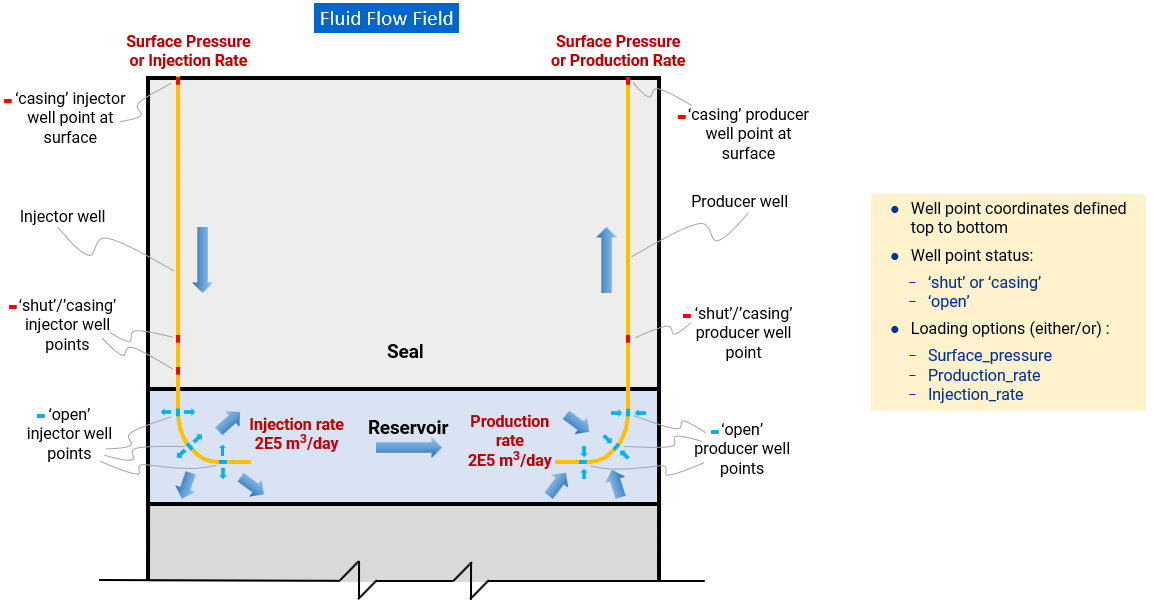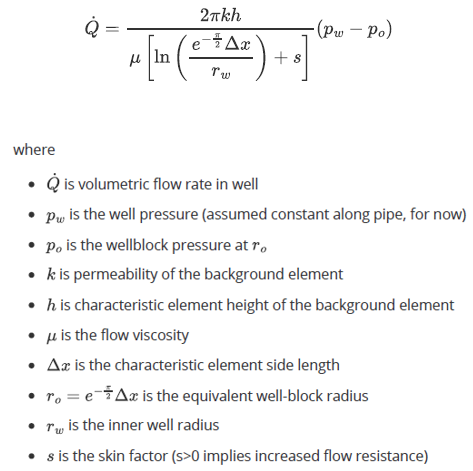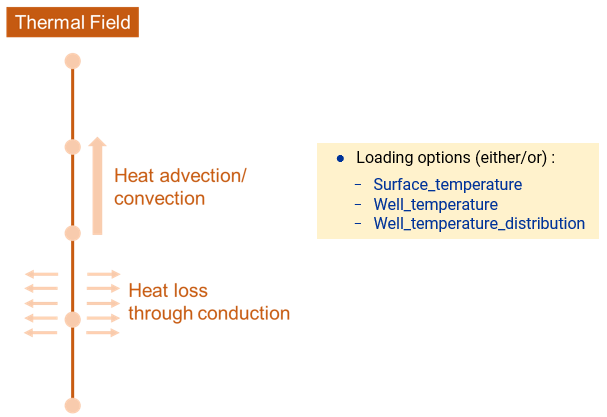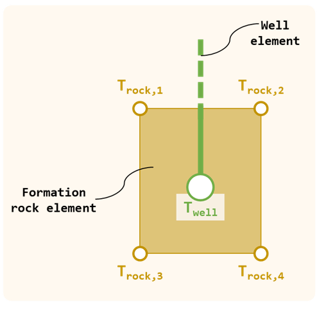Overview
Overview
The well element data structure Well_definition allows for the definition of injection, production and U-shaped wells for porous flow and thermal flow. The well path is defined through a series of points which may be "open" (leak off) or "shut"/"casing" (no leak-off). Flow within the well may be defined via injection rate, production rate or surface pore pressure with an associated time curve. For a thermal or Thermal-Hydro-Mechanical THM simulation, the temperature in the injector well may be defined as a constant well temperature or prescribed a surface temperature. For the latter case, thermal flow is solved in the well and with the surrounding rock.
The data structure can be defined when the well becomes 'live' or initially set to "shut" and later updated to "open" when the well goes 'live'. Note that for well redefinition, only the status, loading and time curve may be changed, any other changes will be ignored for the initial definition.
The Well_completion data structure details thermal properties, wall component thickness and radius for elements along a well path, linked to a specific Well_definition.
Fluid Flow

Illustration of 'Well Element' (Fluid Flow)
There are two radial flow models used to compute the pore pressure surrounding the well:
•Standard (Default) - Compute pore pressure or volumetric flow rate according to proximity interpolation factor.
•Peaceman - The Peaceman model relates well flow rate to wellblock pressure via finite-difference grid adjustments. The algorithm further updates nearby nodes with volumetric flow rate using proximity-based interpolation.
In the Standard model, the flow rate is distributed equally to the background element nodes regardless of element size.

Standard Flow Model
In the Peaceman model, the flow around the well is assumed to be steady-state and strictly radial in a cylindrical coordinate system. The flow rate is defined by the following equation, noting that skin factor s is also taken into consideration:


Peaceman Model: Increase of Flow Pressure Gradient with Well Injection Flow Rate
Note that the following relation leads to division by zero in the equation above

Using the calculated volumetric flow rate, each background node is updated with a value proportional to its proximity to the well node, as determined by the proximity interpolation factor ƒ.

Flow is distributed to each node based on its proximity to the well, scaled by interpolation factors
Thermal Flow

Illustration of 'Well Element' (Thermal Flow)
When temperature in the well is defined using Well_temperature or Well_temperature_distribution, these temperatures remain constant throughout the simulation, no thermal flow is solved for the well temperature.
On the other hand, if well temperature is defined using Surface_temperature, there are three radial heat models available to compute the background rock temperature distribution in a radial direction away from the well:
•Model_1 - Use far-field temperature as reference according to Ramey (1962).
•Model_2 - Use far-field temperature as reference according to Hasan (2012) (Default).
•Model_101 - Standard model using the current surrounding temperature.
In the standard Model_101, the contribution of well element to the background rock element is based on the temperature difference between the two, i.e. Twell - Trock,i.

Standard "Model_101"
With the analytical approach based on the Ramey and Hasan models, the contribution of well element to the background rock element is based on the well element temperature and a fixed far-field (or initial) rock temperature. The Ramey and Hasan heat transfer equations are defined as:

Ramey "Model_2" and Hasan "Model_1" Heat Transfer Equations
References
•Ramey, H.J., 1962, Wellbore heat transmission, Journal of Petroleum Technology
•Hasan, A.R., Kabir, S., 2012, Wellbore heat-transfer modeling and applications, Journal of Petroleum Science and Engineering
